Chemistry > Study Notes > CHEM120 Week 4 Concepts: The Ideal Gas Laws and Acid/Base Reactions- Download To Score An A+ (All)
CHEM120 Week 4 Concepts: The Ideal Gas Laws and Acid/Base Reactions- Download To Score An A+
Document Content and Description Below
CHEM120 Week 4 Concepts: The Ideal Gas Laws and Acid/Base Reactions- Download To Score An A+ PHYSICAL STATES OF MATTER In this section, we will discuss the Ideal Gas Laws. First, we will review ... the properties of solids, liquids, and gases. Second, we will discuss the kinetic-molecular theory of gases, which explains why they are so unique compared to other states of matter. Finally, we will discuss gas law equations, and practice using them to solve for different parameters. This unit has many strong connections to our daily lives as we are surrounded by examples of the materials we are studying. Our breathing depends on the gas laws we will be studying. Particles are tightly packed in a set pattern, with a fixed volume and shape. Solid Particles are close together with no regular pattern of arrangements; has a set volume that will take the shape of the container it is placed in Liquid Particles are well separated with no arrangement, and does not have a set volume but rather adapts to the entire volume of the container it is placed in Gas CHARACTERISTICS OF STATES OF MATTER This is important in terms of chemical reactions, because particles must be in close proximity in order to react. In solids, the particles are closely packed together; the rigid conformity to their packed structure often prohibits extensive reactions, but nonetheless chemical reactions occur in the solid state. Most known chemical reactions take place in the liquid state, because the particles are closely interacting, but also have some flexibility of movement. Gases are unlike solid and liquids because the particles have very few interactions, and the interactions are transient. Solid Liquid Gas Fixed shape No fixed shape No fixed shape Shape not set by container Takes shape of filled portion of the container Takes shape of container Shape remains rigid Can be poured Fills container Particles fixed in place but vibrate around a fixed position Particles move past one another Particles move through space Little or no volume change under moderate pressure Can be compressed slightly by moderate pressure Compressed under moderate pressure Little free space between particles Some free space between particles Particles are widely separated with much free space Regardless, all states of matter are capable of chemical reactions. For example, solid wood can react with gaseous oxygen (O2) and a spark to create a fire, producing CO2 and H2O gases. The human body brings in gaseous oxygen (O2) which dissolves into liquid blood and expels gaseous CO2 as waste. Oxygen gas is inhaled to the lungs, and brought into the blood, which is a liquid. Our bodies exchange the oxygen for carbon dioxide, which is a gas. The carbon dioxide is forced out of lungs by increasing the pressure of the lungs. Is the quality associated with solids, liquids, or gases, or multiple? Note yes/no for each. Solid Liquid Gas Shape is fixed Yes No No Shape depends on container No Yes Yes Volume is fixed Yes Yes No Particles touch, with some but not much space between particles Yes Yes No Particles move through space easily, with much free space between particles No No Yes KINTETIC MOLECULAR THEORY OF GASES The gas laws allow us to approximate how a gas will behave in a given situation. We will be looking at several of these gas laws: Boyle's Law, Charles' Law, Avogadro's Law, and the Ideal Gas Law. These laws are useful but not perfect as these laws rely on a set of assumptions that makes these gases “ideal”: • When gas molecules collide, they bounce off each other but have no chemical reaction • This is called a perfectly elastic collision, such as a ball bouncing on the floor • Ideal gas molecules have no attraction to each other • They will neither be attracted nor repelled • Ideal gas molecules themselves take up no volume • The gas as a whole has the volume of the container, but the volume of the individual molecule is negligible As part of the kinetic molecular theory of gases, we can correctly assume that gas molecules are in constant motion. This energy is directly proportional to the temperature of the gasses: more energy means higher temperature. Additionally, as the number of collisions increases the pressure will increase as these collisions apply force to the walls of the container. If the container is flexible, such as car tires or a balloon, as the collisions increase the volume can increase as a result. If the gas is in a fixed container such as an oxygen tank, spray can, or fire extinguisher, the volume is fixed and will not change. Similarly, if there are fewer number of molecules, the number of collisions will decrease. This can happen when air is let out of a balloon and can affect the pressure and temperature by decreasing the total number of collisions. Consider a hot air balloon: the flame heats up the gas in the flexible balloon. As the temperature increases, the pressure and volume of the balloon will increase. As the molecules take up more space, the density (mass per volume) decreases and allows the balloon to float. To land, the less dense hot air is released, and the flame turned down, decreasing the volume and slowing the collisions, decreasing the pressure, and increasing the density of the air in the balloon. This allows the balloon to land. Does the property apply to an ideal gas, non-ideal gas, or both? Ideal Gas • No attractions • Perfectly elastic collisions • Molecules have no volume Non-ideal Gas • Molecules do have a small volume • Collisions can cause chemical reactions Both Ideal and Non-ideal Gas • Molecules in constant motion Determine if the quality best describes solid, liquid, or gas state of matter. Can be compressed slightly by moderate pressure Liquid Particles collide but otherwise do not interact Gas Shape remains rigid Solid As the number of collisions of an ideal gas increases, which of the following will also occur? o the gas will become solid o the gas will become compressed o the number of chemical reactions will increase o the temperature will increase o the pressure will increase For ideal gases, the molecules themselves , which is one assumption of the ideal gas law. o will have no collisions o will have no temperature o will have no volume o will have no pressure Liquids and gasses both… o take the shape of the container they occupy o have perfectly elastic collisions o have molecules that do not touch or interact o can be poured We exhale CO2, a Gas. We drink water which is a Liquid. Our blood transports oxygen, a Gas. In a hot air balloon, the flame is turned down. What is the result? o the density increases o the pressure decreases o the temperature decreases o the volume decreases A rigid can of compressed air is used, releasing half of the contents. Which of the following is the result? o the temperature decreased o the pressure decreased o the volume of the rigid can decreased GAS LAWS In this section, we will discuss the Ideal Gas Laws by drawing on the knowledge gained in the previous section. We will discuss gas law equations, and practice using them to solve for different parameters. This unit has many strong connections to our daily lives as we are surrounded by examples of the materials we are studying. Our breathing depends on the gas laws we will be studying. Consider inflating a balloon. As you inflate the balloon, which of the following is true? Select all that apply. o the gas collides with the inside surface of the balloon o the gas takes the shape of its new container o there are fewer gas molecules in the balloon once it is inflated o the volume of the balloon increases o the number of molecules of gas in the balloon increases o the balloon becomes smaller THE GAS LAWS: BOYLE’S LAW Boyle's Law states that pressure and volume of a gas are inversely proportional at a constant temperature. In other words, as one goes up, the other goes down and vice versa. For example, as the pressure of a sample of ideal gas in a balloon increases, the volume of the balloon decreases. In other words, if you compress a balloon, it will get smaller. Similarly, as the diaphragm pulls downward, it lowers the pressure in the lungs and causes gas to enter to expand the volume. As we exhale, the diaphragm will increase the pressure and the volume of the lungs will decrease, causing carbon dioxide to be expelled. The best way to understand these laws is to work through examples. A problem will relate to Boyle’s law if the question involves pressure and volume of a gas at an initial state, and then after a change. At a constant temperature, a sample of gas occupies 1.5 L at a pressure of 2.8 ATM. What will be the pressure of this sample, in atmospheres, if the new volume is 0.92 L? P = P1 V 1 (2.8 ATM )(1.5) =4.6 ATM 2 V 2 0.92 L OTHER GAS LAWS Charles' Law states that at a constant pressure, the volume of a gas is directly proportional to temperature. In other words, as one goes up, the other goes up and vice versa. For example, as the temperature of a sample of ideal gas increases, we would expect the volume to increase as well. A balloon in the freezer would have a smaller volume than if it were stored in a hot car; this is because as temperature decreases, the gas will have less energy and there will be fewer collisions with the walls of the container; thus, the volume decreases as well. We express this as: V 1 V 2 = T 1 2 Important Note: before using any temperature in a gas law, convert into kelvin (K). This is critical as other temperature scales will not give you the correct values. Avogadro's Law states that at a constant pressure and temperature, the volume of a gas is directly proportional to the amount of gas. In other words, as one goes up, the other goes up and vice versa. This law applies every time you inflate or deflate a balloon: as you inflate, the volume increases because you are adding more gas; if there is a hole, the molecules of gas escape and the volume decreases. For example, as the amount of an ideal gas increases, we would expect the volume to increase as well. We express this as: V 1 V 2 = n1 2 We can use the combined gas law to study more complex situations where more than one parameter is changing at a time. The combined gas law below is useful when looking at situations where more than one variable is changing. For example, a balloon would experience colder temperatures, more pressures, and decreases in volume if put in the bottom of the ocean. P1 V 1 T1 P2 V 2 = T2 The best way to determine which formula to use is to first make a list of the variables, then matching the variables to determine the best formula. For example, if you are given a volume and two temperatures to find a volume, you would use Charles’ Law. For a problem given pressure, volume, and temperature, you would use the Combined Gas Law. It is essential to keep the units in mind as well to ensure they cancel correctly, and temperature is converted to kelvin before solving. As a reminder, we can convert from Celsius to kelvin by simply adding 273.15. Match the gas law to the best description: At a constant pressure, as temperature increases volume also increases While being kept at a constant temperature, a sample of gas is introduced to a lower atmospheric pressure Air is released from bicycle tires A balloon filled with gas rises from the ground to the upper atmosphere where it is colder and the pressure is lower Which gas law should be used in the following problems: A sample of nitrogen (N2) has a volume of 50.0 L at a pressure of 760 mmHg. What is the volume of gas at a pressure of 1500 mmHg if there is no change in temperature? Boyle's Law P1V1=P2V2 Determine the new temperature in °C for a sample of neon with the initial volume of 2.5 L at 15 °C, when the volume is changed to 3550 mL. Pressure is held constant. Charles' Law V1/T1=V2/T2 Correctly rearrange Charles’ Law to solve for the unknown in the following problem: Determine the new temperature in °C for a sample of neon with the initial volume of 2.5 L at 15 °C, when the volume is changed to 3550 mL. Pressure is held constant. T 1 T2 = x V 2 1 Determine the new temperature in °C for a sample of neon with the initial volume of 2.5 L at 15 °C, when the volume is changed to 3550 mL. Pressure is held constant. o -252 °C o 21.3 °C o 136 °C o 294 °C o 409 °C Ideal Gas Law The Ideal Gas Law is the source of all other gas laws and allows us to calculate a parameter of a gas if we know the other parameters in the equation: PV=nRT This equation describes a gas at one point in time, unlike the named gas laws discussed previously which have an initial and final state in each equation. In the above, P stands for pressure, V for volume, n for amount of gas in moles, T for temperature in Kelvin, and R for the Ideal Gas Constant. Remember, to convert temperature from Celsius to Kelvin, add 273 to the temperature in Celsius. To convert pressure from mm Hg to atmospheres (ATM), use the equivalency 760 mm Hg = 1 atm. You may be wondering why R has so many units. To understand this, you need to understand the concept of STP or Standard Temperature and Pressure. STP is defined as a temperature of 0 degrees Celsius (273.15K) and a pressure of 1 ATM. At STP 1 mol of any gas has a volume of 22.4 liters. The units of Liters, ATM, K, and mol are the same units that are required for volume, pressure, temperature, and number of moles, respectively. When using the Ideal Gas Law, these units must be used to get the correct answer. Match the units to each of the following variables in the Ideal Gas Law o Pressure (P) atm o Temperature (T) K o Volume (V) L o Number of moles (n) mol Calculate the pressure, in atm, of 0.0158 mole of methane (CH4) in a 0.275 L flask at 27 °C. o 0.71 atm o 1.6 atm o 1.4 atm o 0.13 atm STANDARD TEMPERATURE AND PRESSURE A unique consideration for gases occurs at standard temperature and pressure, STP, mentioned previously in the derivation of the gas constant, R. The standard temperature is 0 °C (273 K) and standard pressure is 1 atm. At this unique temperature and pressure, the following is true for all gases: • 1 mole of any gas will have a volume of 22.4 L at STP We can use the relationship between volume and number of moles of any gas at STP as an equivalency to solve for any volume if given number of moles, or moles if given volume at STP. For example, at STP 2 moles of a gas would have a volume of 44.8 L: 2 moles x 22.4 L =44.8 L 1 mole Similarly, at STP 50 L of a gas would contain moles: 50 Lx 1 mole =2.23 moles 22.4 L The conditions for STP are: o 273 K and 1 atm o 273 K and 0 atm o 1 K and 0 atm o 0 K and 1 atm You have 33.6 L of neon gas at STP. How many moles is this? o 752.64 moles o 1.5 moles o 22.4 moles o 11.2 moles The relationship of 22.4 L to 1 mole at STP is true for: o Only oxygen gas o Only halogen gases o Only noble gases o Any gas You are using your hot air balloon to travel. At constant pressure, you decrease the temperature of the gas by turning down the flame. What do you expect to happen to the volume of the 400 L balloon as the temperature decreases? o less than 400 L; as temperature decreases, volume also decreases o more information is needed to make a determination o more than 400 L; as temperature decreases the volume will increase o about the same as 400 L; temperature alone does not affect volume A sample of nitrogen (N2) has a volume of 50.0 L at a pressure of 760 mmHg. What is the volume of gas at a pressure of 1500 mmHg if there is no change in temperature? BOYLES LAW o 0.040 L o 0.010 L o 25 L o 96.7 L As you breathe in, your diaphragm drops (expanding), increasing the volume of your lungs and decreasing the pressure in your lungs. As a result, the volume of the lungs will increase. A sample of helium gas has a volume of 6.5 L at a pressure of 1.11 atm and a temperature of 25 °C. What is the pressure of the gas in atm when the volume and temperature of the gas sample are changed to 1850 mL and 325 K, respectively? COMBINED GAS LAW o 4.25 atm o 173.5 atm o 0.235 atm o 0.300 atm A gas in a balloon has a volume of 4.0 L at 0 °C. You move the balloon and measure the new volume as 6.5 L. What is the final temperature, in °C? o 0 °C o -273 °C o 443.6 °C o 171 °C In the gas laws, the units of the amount of gas (n) is moles, the units of pressure are atm, the units for volume are L, and the units of temperature are K. You are inflating a balloon using a helium tank at a constant temperature and pressure. The helium tank increases the number of moles in the balloon, causing the volume to increase Rank the following gases by the number of moles they would contain at STP, greatest to least. 30 L of helium, 0.5 moles of oxygen, 67.2 L of nitrogen gas. o Nitrogen o Helium o Oxygen A sample of hydrogen gas occupies 250 mL at 90mmHg. For a gas sample at 25 °C, determine the number of moles of hydrogen present in the sample o 0.0000912 o 826.4 moles o 10,962 moles o 0.00121 moles o 0.920 moles TYPES OF SOLUTIONS Very little of the matter we encounter is pure; we are surrounded by mixtures. In this lesson, we will focus on mixtures with a focus on solutions. This lesson will build a foundational understanding of solution chemistry that we will build on in future lessons. Which of the following would be considered a solution? o Milk o Table sugar dissolved in water o Soda water o Mustard If you were to dissolve 2.5 grams of NaCl in 150 g of water, You would call the NaCl the: o mixture o solvent o solute o solution Mix two liquids together and shake them up. You see that you have microscopic droplets of one liquid suspended in the other. You would call this: o solute o emulsion o solvent o solution MIXTURES From the blood in our veins to the water that comes from our faucets, we are surrounded by impure matter. In the universe, completely pure substances are rare. If we were to analyze a cup of water from your sink to determine what atoms and molecules were within the sample, we would find far more than just H2O. In a cup of water, we would likely find fluoride, H3O+ ions, sodium, and phosphate ions just to name a few examples of compounds that may be mixed into the water. As we will see in this lesson, mixtures are an important part of this world and vital to the processes that apply to life. We will start by exploring a bit of terminology to get us the language we need to explore this topic. SOLUTION TERMINOLOGY Consider a cup of tea. Many of us have prepared a cup of tea by adding a tea bag to hot water and allowing time for the tea to brew. When the bag is removed, we now have the mixture of compounds that we call tea. How might we describe this cup of tea? To explore this mixture, we will need a bit of terminology relating to mixtures. To start us off, let us consider the term “mixture”. A mixture is a combination of more than one compound, physically mixed together (as opposed to reacting together chemically). In other words, a mixture could be physically separated. For example, with our cup of tea, we could evaporate the water, leaving us with the tea leaf based compounds. As you may recall, there are two major types of mixtures, homogenous and heterogenous. Heterogenous mixtures are not uniform in their composition. For example, a glass of soda would contain many bubbles of gas distributed unevenly through the mixture. In contrast, homogenous mixtures are uniform in their composition. An example of a homogenous mixture is a glass of clear salt water, as the salt is dissolved completely and present uniformly all through the glass. Homogenous mixtures that do not separate out over time and cannot be separated by most membranes are known as solutions. We can use the terminology below to describe solutions: • Solution: a homogenous mixture of two or more substances; components cannot be distinguished visually from one another • Solute: the substance that makes up the smaller part of the solution • Solvent: the substance that makes up the larger part of the solution To get a better understanding of these terms, consider an 8 oz cup of water where we have dissolved 0.2 grams of sugar. The solute in this case would be the sugar, the solvent is the water, and the solution is the sugar-water mixture. Think back to the cup of tea. Remove the teabag from the cup of tea. Do you think that this cup of tea is a homogenous solution or a heterogenous mixture? Assume when the teabag is removed, no tea leaves remain in the cup. o Heterogenous o Homogenous SOLUTIONS Another key piece of terminology for solution chemistry is the term concentration. Concentration is a measure of how much solute is in a given amount of solvent. In a qualitative way, mixtures with a large amount of solute per amount of solvent are called concentrated, while mixtures with a small amount of solute in a given amount of solvent are called dilute. In future lessons, we will look at these terms in a more quantitative way. Solutions are not only liquids. The air around us is an example of a gas solution. Air consists mainly of nitrogen, but also has oxygen (important for our existence!), CO2, and other trace gases. Air also contains H2O gas (this is where clouds come from). Other important gas solutions include: • The gas used for anesthesia is typically a 50/50 mixture of N2O and O2. Commonly known as “laughing gas” • A solution of oxygen and helium is often used by deep sea divers to prevent a dangerous medical condition known as “the bends”. • Gas canisters used for stoves are typically a mix of different hydrocarbon-based gasses. COLLOIDS, SUSPENSIONS, EMULSIONS We will be exploring three additional types of mixtures. We have already discussed solutions, and will now explore colloids, suspensions and emulsions. Please note that a complex mixture can meet multiple terms. For example, a given mixture could be considered both a colloid suspension and an emulsion. The table summarizes the differences between these particles. Classification Distinguishing Characteristics Example Solution Solute particles cannot be visually distinguished from solvent or one another. Cannot be separated by a membrane or by settling out. Usually transparent. CaCl2 dissolved in water, Copper sulfate dissolved in water Suspension Heterogeneous nature. Cloudy dispersion of large particles (large enough to be seen with the naked eye). Particles often settle out over time. Muddy water, Fog Colloid Contains particles large enough to scatter light, and appear cloudy. Can be separated by a membrane but not by settling out. Often have gel like consistencies. Silica nanoparticles in water, Blood Emulsion One liquid suspended, but not dissolved in another liquid. Often one liquid is water based and the other is oil based. Homogeneous mixture of oil and water, milk Classify each of these simple solutions: Solution Bleach Suspension Colloid Emulsion Which of the following would you expect to have the greatest concentration? o 4 grams of solute in 2 liters of solvent o 3 grams of solute in 2 liters of solvent o 6 grams of solute in 2 liters of solvent o 5 grams of solute in 2 liters of solvent If 20 ml of ethanol is mixed with 100 ml of water, the ethanol would be considered the: o solvent o solute o solution o suspension Match each of the following with the term that best describes the mixture: Air Blood Cream Flour in water I dissolve 1 gram of salt in 400 ml of hot water. I would call the resulting mixture a: o Solute o Colloid o Solution o Colloid ACIDS- BASES ACIDS- BASIS You have likely heard the words “acid” and “base” before and have an idea of what these terms refer to. You have likely heard that soda is acidic and bad for tooth enamel for example. In this lesson, we will discover what these terms mean on a chemical level and how they play many roles in our lives. Which of the following solutions would you classify as basic? o A solution with a pH of 6 o A solution with a pH of 7 o A solution with a pH of 4 o A solution with a pH of 9 Which of the solutions below do you believe would have the most H+ ions in solution? o A solution with a pH of 9 o A solution with a pH of 6 o A solution with a pH of 4 o A solution with a pH of 7 Which of the following would you expect to be acidic? o Bleach o Ammonia o Lemon juice o Baking soda solution ACIDS AND BASES We can never be far from acids or bases. Our bodies are filled with examples of each. When we think of acids, we likely think of lemons, soda, and stomach acid. You may also be familiar with compounds classified as bases, such as antacids, baking soda, and ammonia cleaning solution. Our bodies and the world around us are filled with examples of acids and bases. Acid/Base terminology • Proton: H+ ion • Acid: a species that donates an H+ ion • Base: a species that accepts an H+ ion In the Brønsted-Lowry theory, acids and bases are described based on protons (H+) ions. Acids will donate H+ ions, while bases will accept H+ ions. This process is illustrated in the image: In this process, the acid loses the proton and the base gains the proton. This also means that acidic compounds will release H+ ions into solution, while basic compounds will accept H+ ions from solution. In this way, acidic solutions will have many H+ ions while basic solutions will have few H+ ions. Select the acid in this reaction: LiOH + HBr → H2O + LiBr LiOH HBr H2O LiBr Select the acid X STONG AND WEAK ACIDS Now that we know that an acid is a proton donor, we can explore this in more depth. In acid/base chemistry, the strength of an acid or base is important for how they behave. To start out, we shall look at what it means to be a strong or weak acid. When you hear the word “strong” in acid base chemistry, the term you want to bring to your mind is “decisive”. Strong = Decisive We often think of strong leaders as decisive, able to make a decision and stick to their choice. This is the same for acids. A strong acid releases an H+ ion as soon as this acid is placed in water in a process known as dissociation. This dissociation is complete, meaning that all of the molecules in a drop of HCl (a strong acid) would break up as soon as they entered water. If we drop HCl in water, we would see the following reaction: HCl + H2O → H3O+ + Cl- The H+ from the HCl left the Cl and moved to a nearby water molecule as an H+ cation. As we can see, the HCl is acting as a proton donor, as expected. We also see from the one way arrow that this reaction goes only one way. In other words, once the H+ leaves the acid, this H+ cation does not return. Again, this is a complete process; if any number of HCl atoms are dropped into water together, they will all dissociate completely. On the other hand, we have weak acids. Like strong acids, weak acids release a H+ ion. Unlike strong acids, weak acids do not dissociate completely. They are not “decisive” and the reaction can go both ways as seen in the reaction with the weak acid CH3COOH in water: CH3COOH + H2O ⇔ CH3COO- + H3O+ The double arrow indicates that this reaction can go both ways: left to right or right to left. In solution, this reaction is quickly going back and forth. Again, we call this weak because the reaction is not “decisive”, and rapidly goes back and forth. This back and forth stabilizes, forming what we call an equilibrium. STRONG AND WEAK BASES The rules for strong vs weak acids are similar to our rules for strong and weak bases. Strong bases dissociate completely, while weak bases form an equilibrium, with the reaction rapidly going back and forth. In acids, we looked at the formation of H+ ions; however, strong bases release OH- ions in water. The reason this compound is considered a base (proton acceptor) is that OH- can easily accept an H+ ion to become H2O. The reason that this compound is considered a strong base, is that, as we see from the arrow, this dissociates completely in water. You may be wondering why water is needed for this dissociation to happen. The answer is that this is similar to how other ionic compounds dissolve in water, with the water molecules surrounding and stabilizing each ion. For weak bases, we again see a back and forth reaction. Consider the reaction of a weak base, NH3, in water: NH3 + H2O ⇔ NH4+ + OH- Here we see that an OH- is produced when the NH3 accepts a proton from H2O. As we see, this means that the NH3 is a proton acceptor, aka a base. The double arrow shows us that the reaction can go both ways. Again, this reaction is not “decisive” and is considered weak. Classify the following reactions: Strong Acid Weak Acid Strong Base Weak Base NEUTRALIZATION REACTIONS Neutralization is the process where an acid and a base react to form water and a salt. The term “salt” in this case indicates an ionic compound. In neutralization, the H2O comes from the OH- of the base and the H+ from the acid. For example, HCl, a strong acid, reacts with NaOH, a strong base: HCl(aq) + NaOH(aq) → HOH(l) + NaCl(aq) The HCl, as a strong acid, loses an H+ which reacts with the OH- from the NaOH to form H2O. The remaining ions, Na+ and Cl-, form an ionic compound (Be sure the charges balance). You can see in the model view of the reaction that the products are a water molecule and a salt. Because each neutralization reaction will produce a water and a salt, we will be able to predict the products of a neutralization reaction by forming the H2O and then combining the ions left over to form the salt (again, be sure the charges balance!). In this way, we can predict the products of a neutralization reaction. Complete the following reaction: HClH2OLiClLiOH + HClH2OLiClLiOH * HClH2OLiClLiOH + HClH2OLiClLiOH Acid Base Water Salt pH The concentration of H+ ions in a solution is an important property of a given solution. The way we can measure this property is with pH. The pH is the measure of proton (H+) concentration in a solution. The pH scale is used to measure the acidity or basicity of a solution. With few exceptions for exceptionally strong acids and bases, pH values fall between 0 and 14. Acids have low pH values that range from 0 to less than 7 while bases have higher pH values that range from greater than 7 to 14. A pH of 7 is neutral and is the pH of pure water. In the image you can see examples of household substances along with their approximate pH values. We see the effects of pH all around us. For example, acid rain damages buildings, a change in water pH can result in lead leaching from pipes, highly basic drain cleaner brakes down clogs, and basic antacids are used to treat upset stomachs. The reason pH is an important property is that the pH often effects the type of chemical reactions that are possible. For example, our stomach contains HCl with a pH of about 0, allowing our stomach to break down foods. Our blood maintains a pH of 7.35-7.45 under normal conditions, allowing for the reactions that must take place in our blood for our life process to continue. [Show More]
Last updated: 3 weeks ago
Preview 1 out of 20 pages

Reviews( 0 )
Document information
Connected school, study & course
About the document
Uploaded On
Apr 22, 2024
Number of pages
20
Written in
Additional information
This document has been written for:
Uploaded
Apr 22, 2024
Downloads
0
Views
9

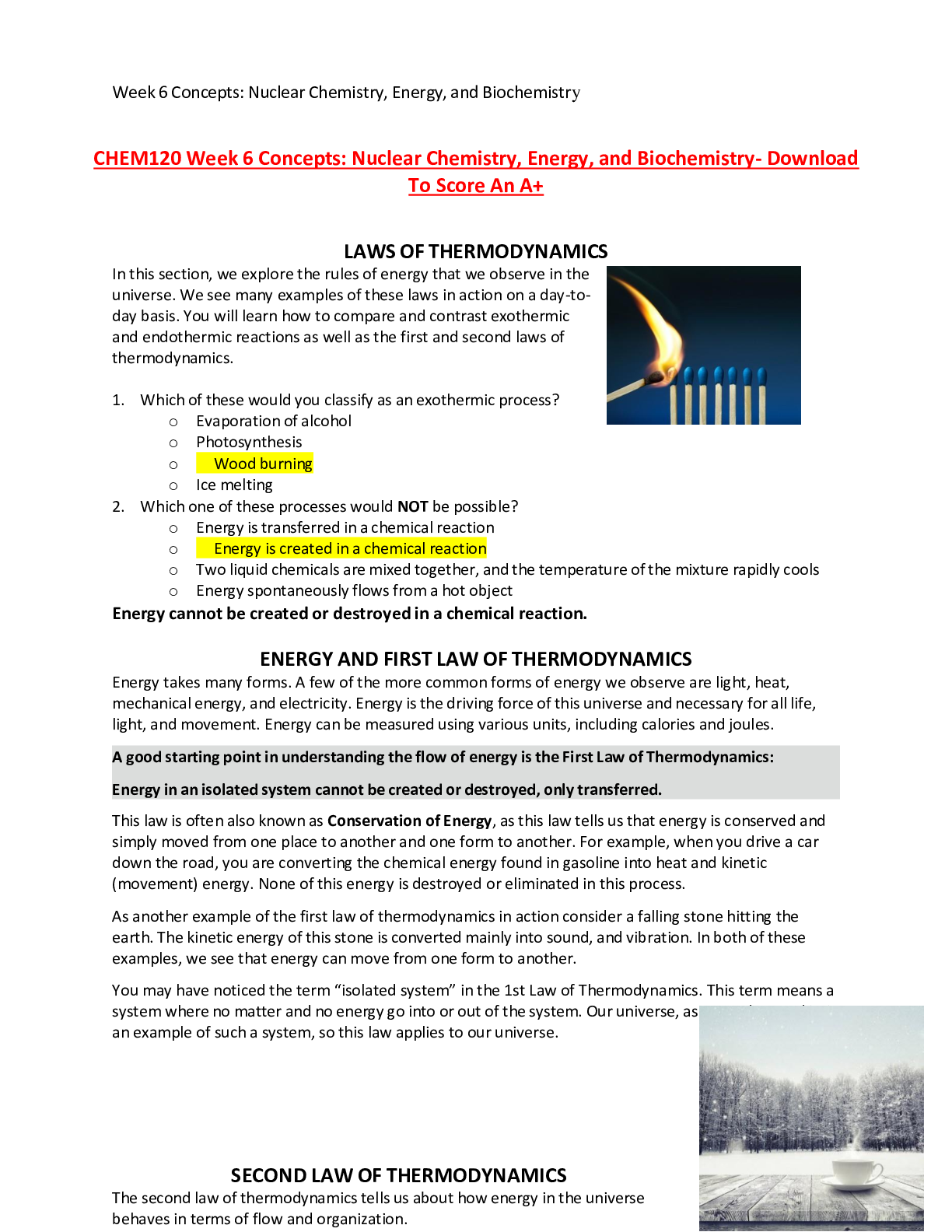

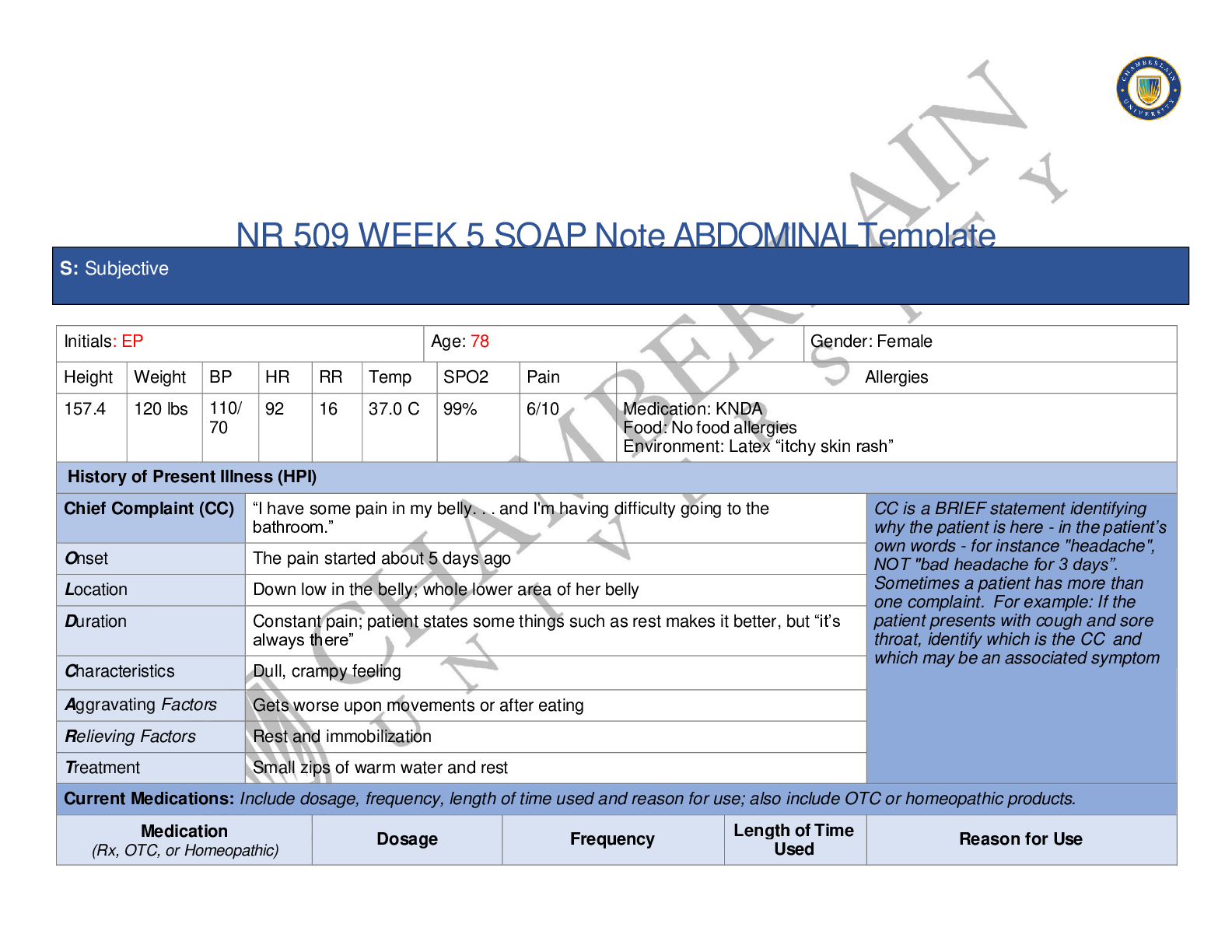
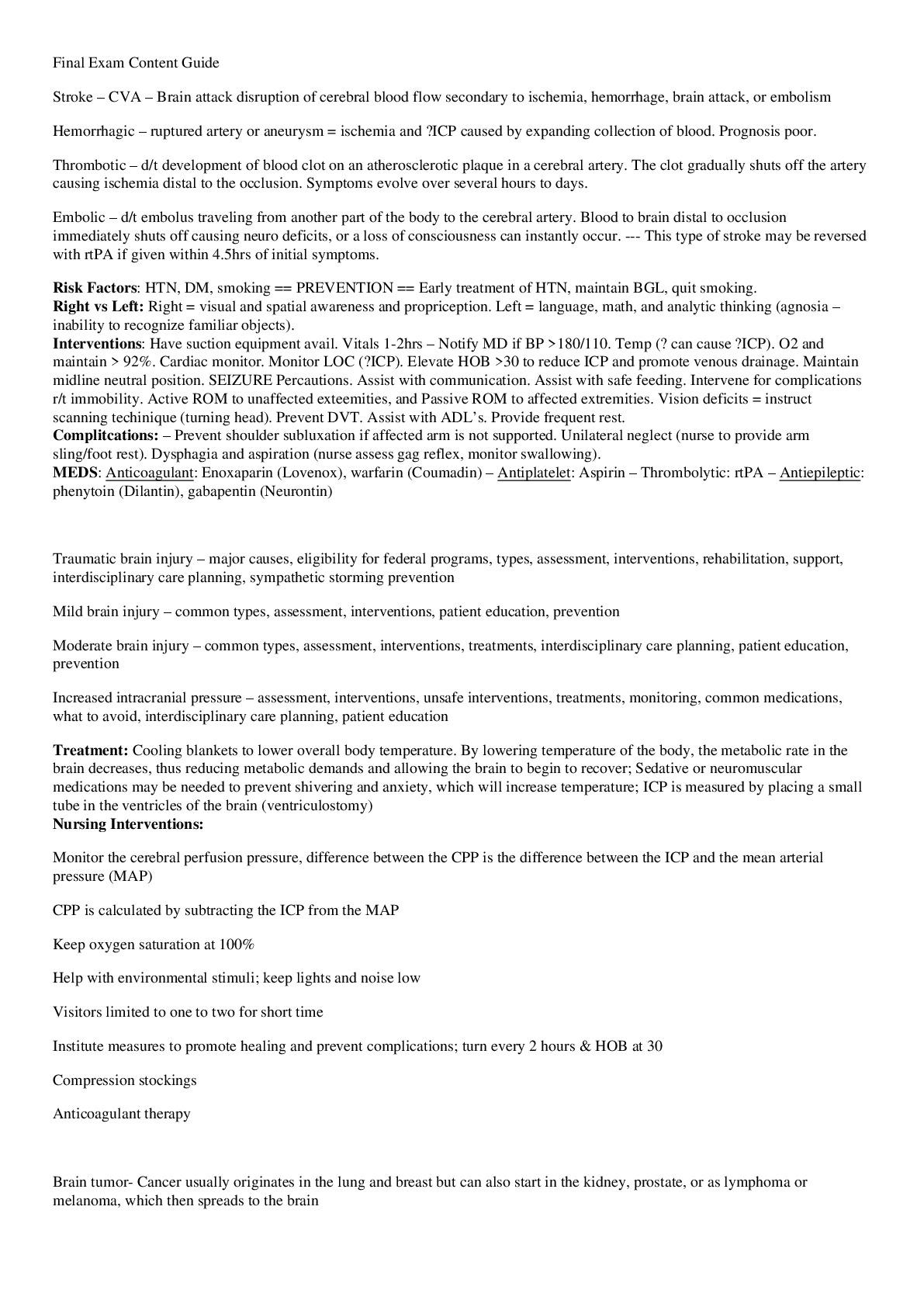
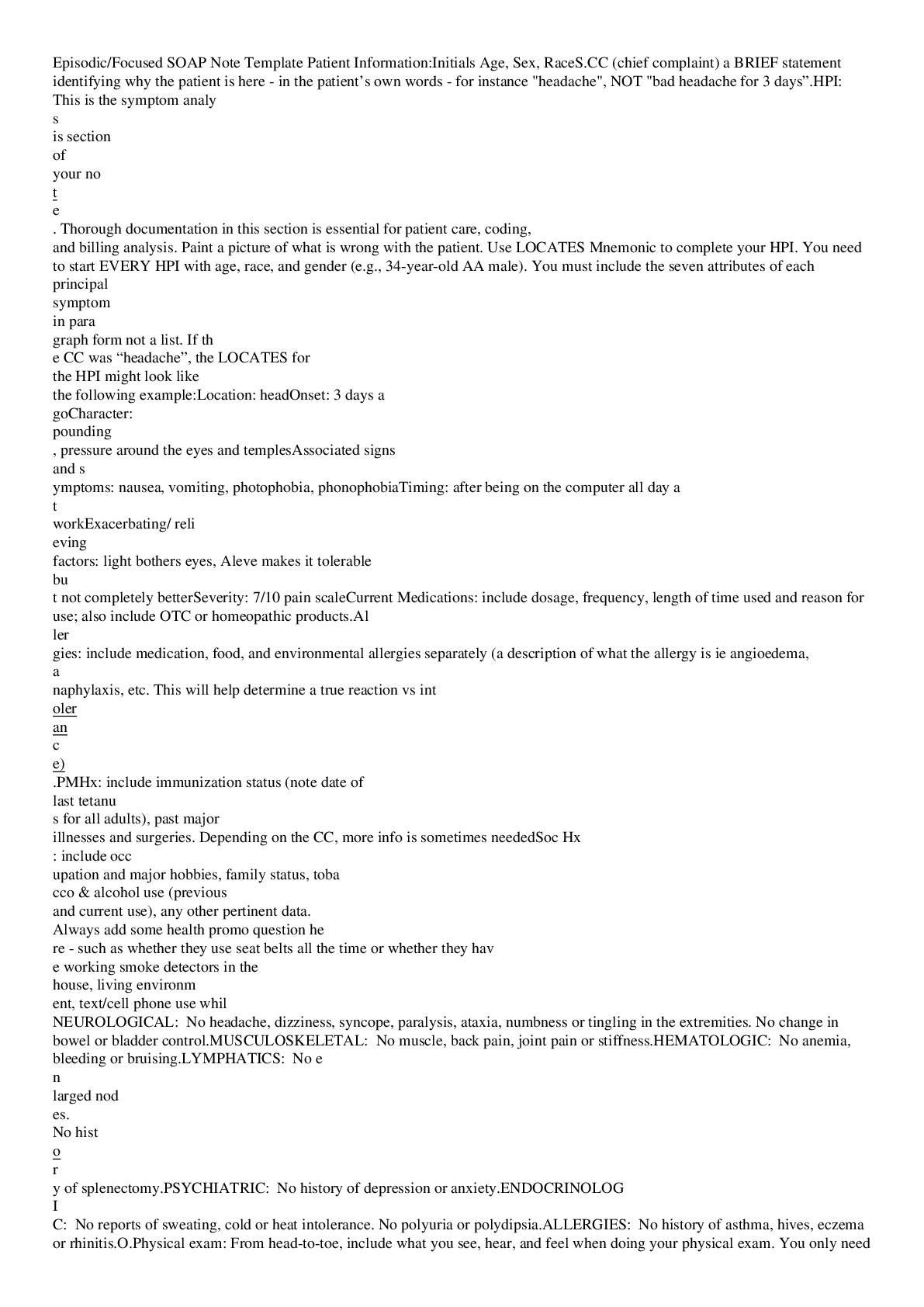
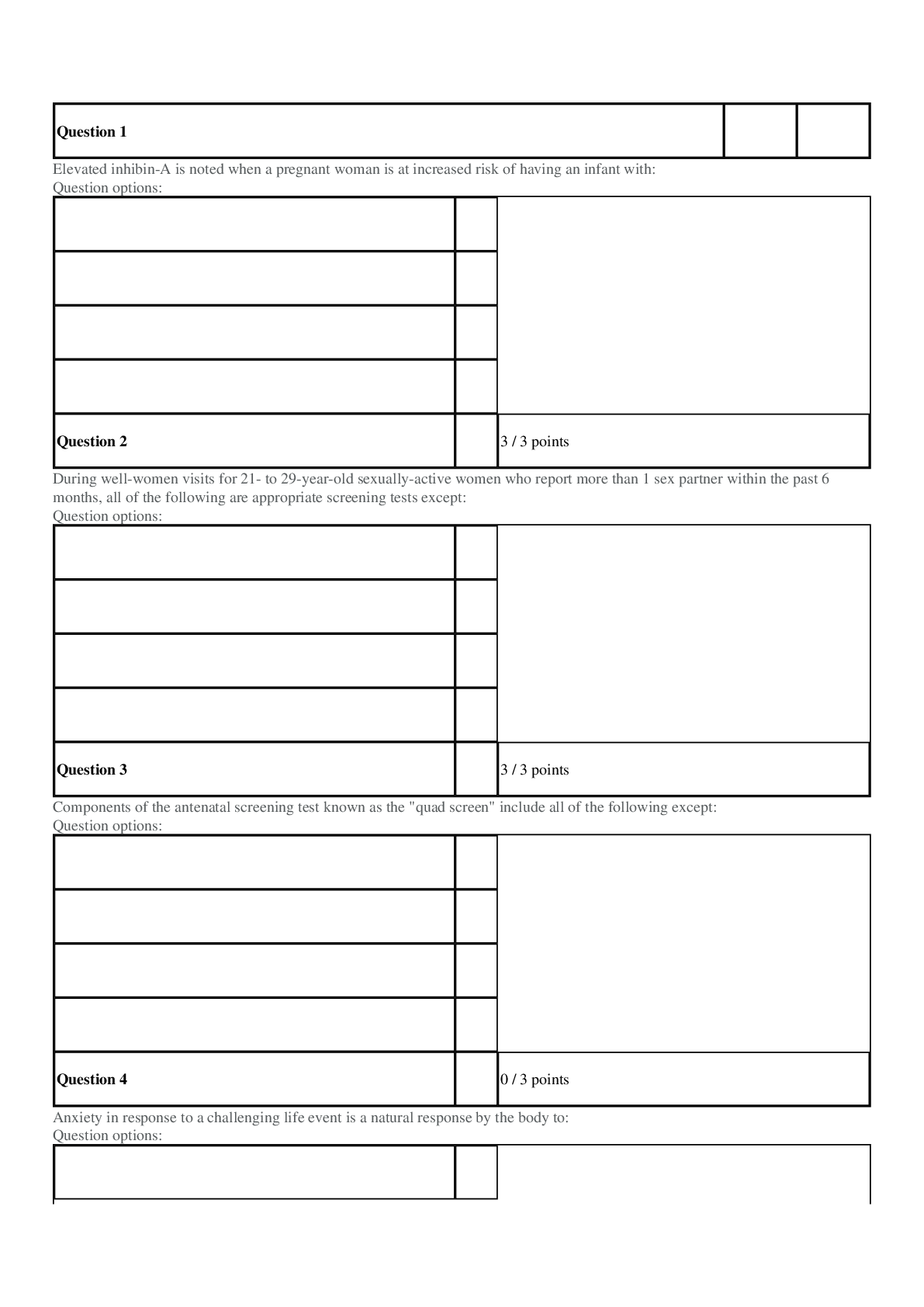
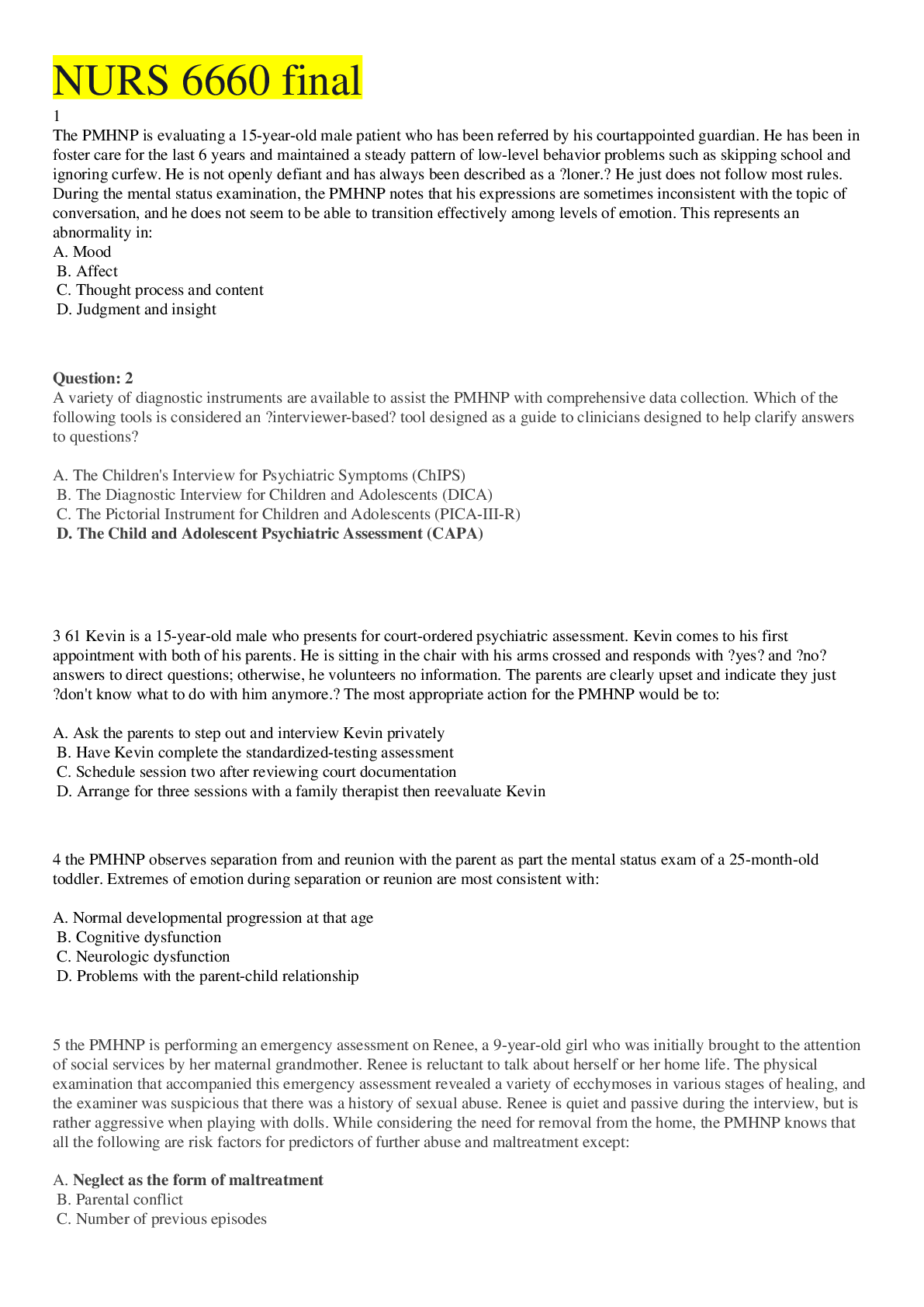
.png)
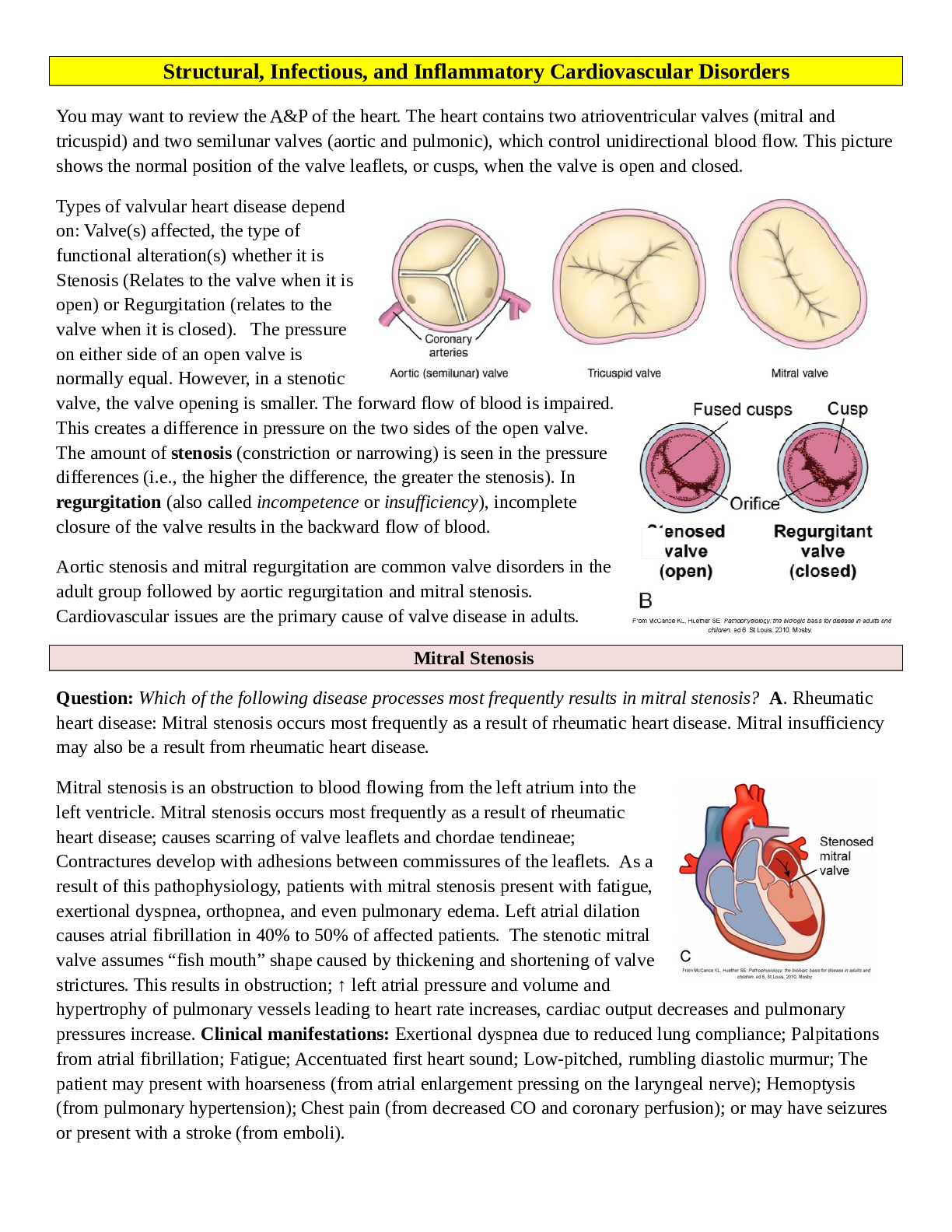

 (1).png)

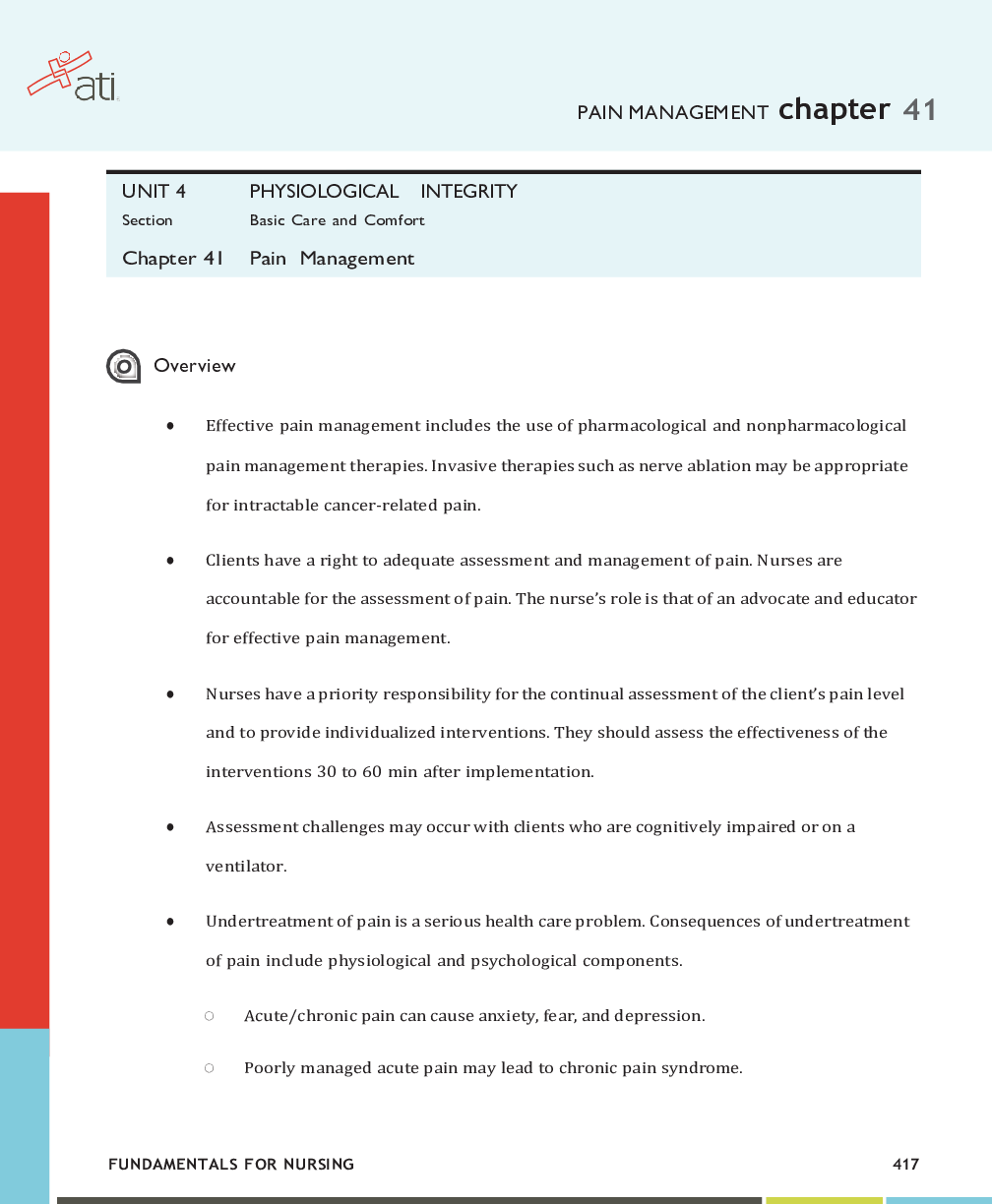
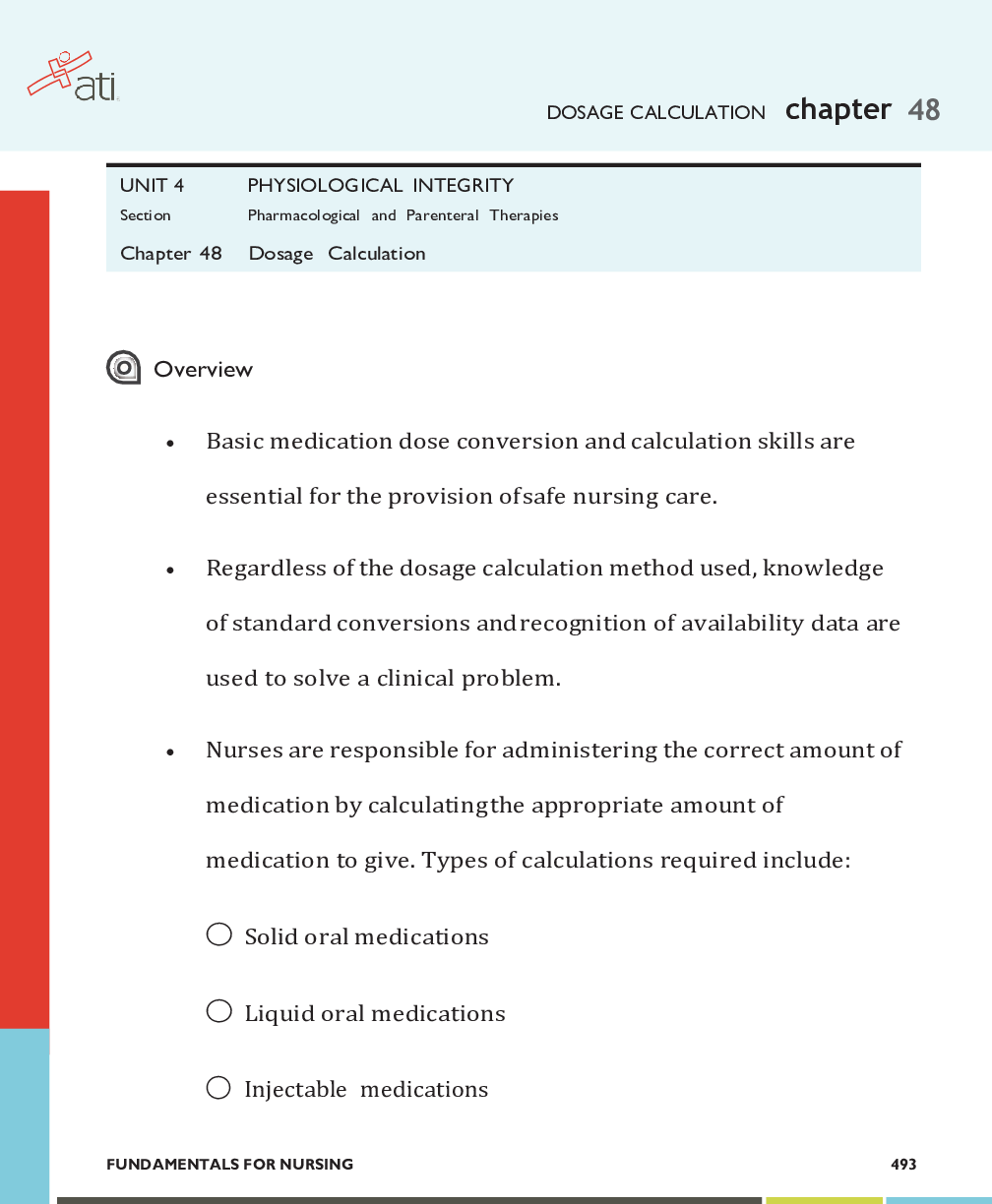


 Correct Study Guide, Download to Score A.png)
 Correct Study Guide, Download to Score A.png)

 Correct Study Guide, Download to Score A.png)
 Correct Study Guide, Download to Score A.png)
 Correct Study Guide, Download to Score A.png)


